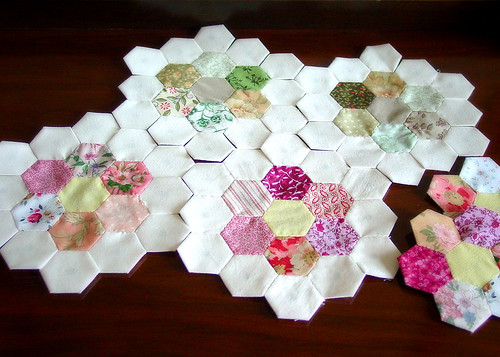A little while ago, my grandmother let me go through her boxes and drawers of fabric scraps and odd lengths. I found bags of useful and lovely stuff, one piece of which happened to be a stylish 70s print in orange, green and brown on white (yeah, 70s). The piece also just happened to be long enough to wrap around my waist and reach my knees, so I devised a suitable and simple skirt pattern to produce on my mother's ancient and dependable Viscount machine.
Machine-sewing on one of these bastards, or the more famous Singer models like the pic, is (I find) much easier than using an electric model. Turning the gears by hand rather than battling the over-sensitive electric throttles makes a pleasant noise; they are also sometimes easier to thread, as all the moving parts are left more visible. Not least, you never have to send off to Korea for parts if the tension screw falls off, but can stop into the nice man in Wimbledon who will hand-make a new one.
Homemade Simple Skirt
You Will Need:
Cotton/similar fabric, approx. 50 x 24 inches (more for more-ish people, i am teensy)
Six or seven appropriate buttons
Strong cotton thread, one reel
Machine
Tailor's chalk
Pins
Flat surface
Measuring tape
Sewing scissors
1) First take your own measurements: hip, and waist-to-knee. Now measure your piece of scrap fabric to make sure you have plenty.
2) Lay your fabric on the flat surface, and mark out the following pattern according to your measurements.
The shortest edges of the four-sided shapes are
half your hip measurement (allowing 1/2 inch seams, in dark brown). The longer edges opposite these
and the vertical edges are taken from your waist-to-knee measurement. Joining these should give you a nice slant. The smaller, triangular shapes can be as long along the bottom as your remaining fabric will allow - remember though that they should be the same size, and do allow for seams. They give the finished garment a bit of swish.
3) Cut out the pieces, allowing 1/2 inch seams all the way round each one.
4) Pin the pieces together. Join each triangle to the two large pieces, slant-edge to slant-edge, straight-edge to straight-edge, wrong sides together. Check for a good fit. If you like, adjust the seams at the waistband to give a more tailored shape.
5) About 5 1/2 inches down the seam between one large piece and triangle, make a chalk mark. Cut two little snips out of the seams at this point. This is a stopping-point to make a gap for buttons.
6) Make sure that your machine is threaded properly by running a test piece of scrap through it a few times. When satisfied, join all the pieces together, removing the pins as you go along.
7) When you come to your snips, stop sewing. Rotate the fabric by putting the needle all the way through, lifting the presser foot, swizzling the fabric and replacing the foot. Sew back over the seam to strengthen it about 2 inches.
8) Above the snips, stitch the 1/2 inches of seam back independently of each other, making a hemmed slit. This will be where you place buttons and buttonholes later.
9) Stitch the waistband seam. Cut any obvious corners off the bottom of the skirt, and hem to a rough circle. It's nice to open out the seams like the pages of a book and hem across them, so that they're flat.
10) With tailor's chalk, mark places for buttons equidistant along the slit on the wrong side. Sew the buttons onto the right side. Hold the other side of the slit fabric over the buttons, and mark on the right side with tailor's chalk where the holes should go.
11) Outline these chalk marks with circles of backstitch, about 2mm away from the mark on all sides. Now go over these circles with closely-placed short stitches perpendicular to the backstitch. It's a buttonhole!
12) Fold the buttonholes in half, so that you can cut a tiny snip inside them with your scissors more safely. Lengthen out these snips carefully until they are the right size for buttons.
Fin!



















